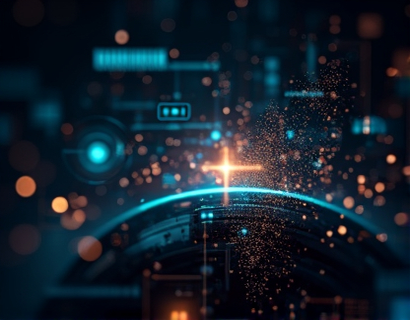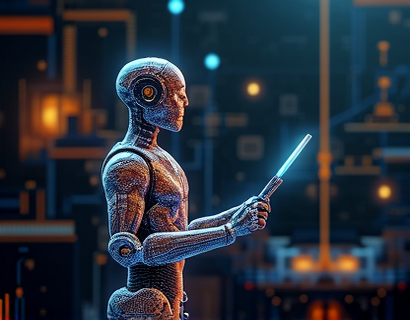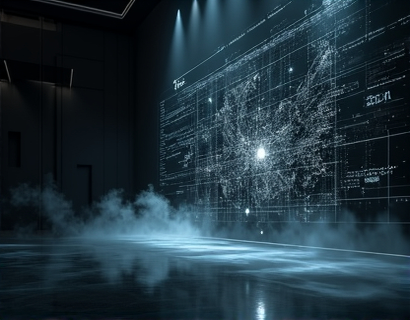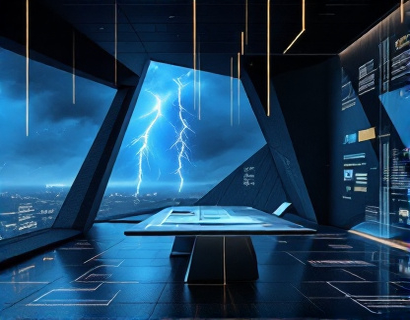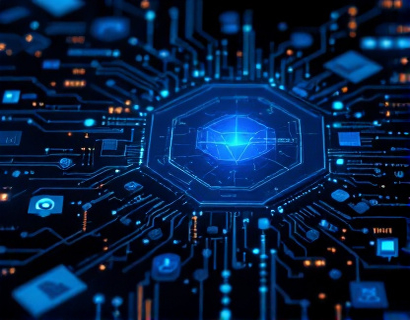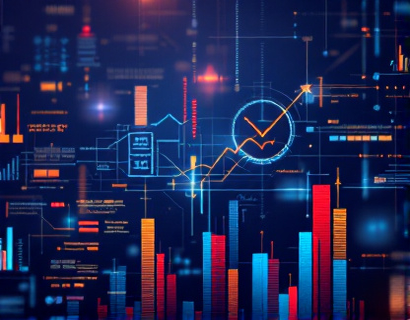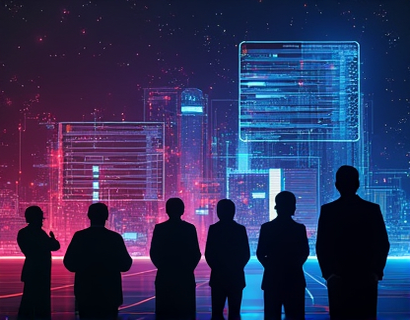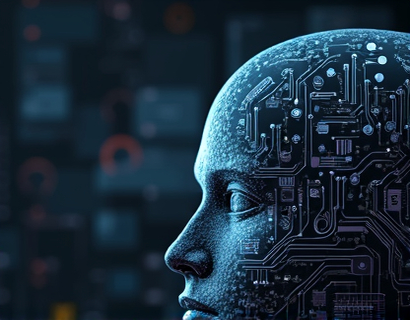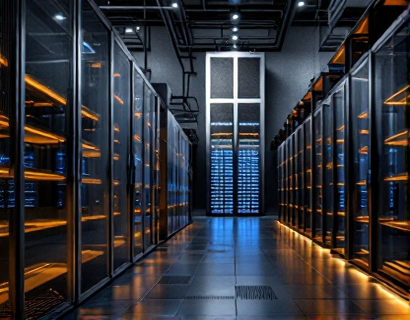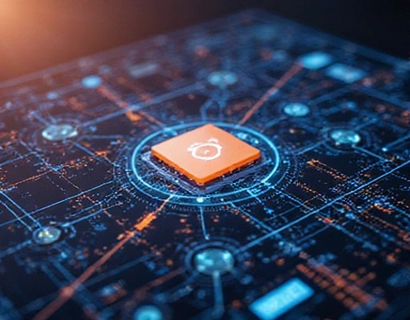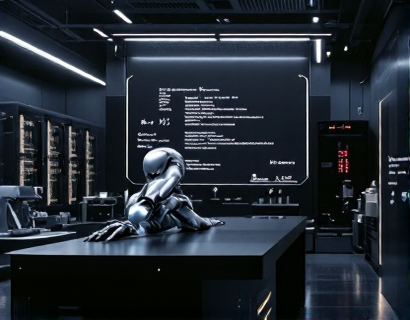Decentralized DAOs: Empowering Web3 Governance with Community-Driven Innovation and Transparency
In the rapidly evolving landscape of Web3, decentralized autonomous organizations (DAOs) stand as a pivotal force, redefining governance and innovation through community-driven approaches. This guide delves into the core principles of DAOs, focusing on how they empower Web3 governance, enhance transparency, and ensure scalability. By understanding these concepts, web3 enthusiasts and innovators can better navigate the complexities of decentralized protocol management and contribute to a more interconnected digital future.
Understanding Decentralized DAOs
Decentralized autonomous organizations, or DAOs, are digital entities governed by smart contracts on a blockchain. These smart contracts encode the rules and procedures for decision-making, fund management, and operational execution, eliminating the need for centralized authorities. The essence of a DAO lies in its decentralized nature, where power and control are distributed among its members, typically token holders.
The concept of DAOs emerged from the broader blockchain and cryptocurrency movement, building on the principles of decentralization and community governance. Unlike traditional organizations, DAOs operate without a central hierarchy, allowing for more democratic and transparent decision-making processes. This shift is particularly significant in the context of Web3, where decentralization is a core tenet.
Community-Driven Governance
One of the most transformative aspects of DAOs is their community-driven governance model. In a DAO, decisions are made collectively by token holders, who vote on proposals through smart contracts. This process ensures that the organization's direction aligns with the collective interests of its community, fostering a sense of ownership and engagement among members.
The governance model in DAOs is designed to be inclusive and transparent. Proposals are typically published on the DAO's blockchain, allowing all members to review, discuss, and vote on them. This openness not only enhances trust but also encourages active participation from the community. The voting mechanism ensures that no single entity can unilaterally dictate the organization's path, promoting a balanced and fair decision-making process.
For instance, a DAO managing a decentralized finance (DeFi) protocol might propose changes to interest rates, fee structures, or new feature implementations. Token holders would review these proposals, debate their merits, and cast their votes. Once a threshold is reached, the smart contract executes the approved changes, ensuring that the decision is binding and immutable.
Transparency in DAO Operations
Transparency is a cornerstone of DAO operations, and it is achieved through the inherent properties of blockchain technology. All transactions, proposals, and votes within a DAO are recorded on the blockchain, making them publicly accessible and tamper-proof. This level of transparency builds trust among community members and external stakeholders, as everyone can verify the organization's activities and financial health.
Blockchain's immutability ensures that once a transaction or vote is recorded, it cannot be altered or deleted. This feature is crucial for maintaining the integrity of the governance process. Additionally, the use of open-source smart contracts allows developers and auditors to review the code, further enhancing security and reliability.
Transparency also extends to financial management. DAOs often maintain public ledgers that detail income, expenses, and asset holdings. This visibility helps prevent mismanagement and fraud, as any discrepancies can be quickly identified and addressed by the community. The combination of public records and community oversight creates a robust system of accountability.
Scalability and Efficiency
Scalability is a critical factor for the widespread adoption of DAOs in Web3. As the number of token holders and the complexity of governance tasks grow, DAOs must evolve to handle increased loads without compromising performance. Advanced blockchain technologies, such as layer 2 solutions and sharding, play a vital role in enhancing the scalability of DAOs.
Layer 2 solutions, like state channels and sidechains, offload transactions from the main blockchain, reducing congestion and lowering transaction fees. Sharding, on the other hand, divides the blockchain into smaller, more manageable parts, allowing for parallel processing of transactions. These innovations ensure that DAOs can scale efficiently, supporting a larger and more diverse community of participants.
Efficiency is another key aspect of DAO scalability. Automated workflows and smart contract orchestration streamline governance processes, reducing the need for manual interventions. For example, automated voting systems can handle complex proposals with multiple rounds of discussion and voting, ensuring timely and accurate decision-making. This automation not only saves time but also minimizes human error, enhancing the overall efficiency of the DAO.
Revolutionizing Digital Protocol Management
DAOs have the potential to revolutionize the management of digital protocols by decentralizing control and empowering communities. Traditional protocol management often relies on central authorities or a small group of developers, which can lead to bottlenecks and limited innovation. In contrast, DAOs distribute these responsibilities across a network of token holders, fostering a more dynamic and adaptive environment.
For example, a decentralized network protocol managed by a DAO can introduce new features, update existing ones, and resolve security issues through community-driven initiatives. This approach accelerates innovation, as ideas can be quickly proposed, discussed, and implemented without the need for lengthy approval processes. The collective intelligence of the community ensures that the protocol evolves in alignment with user needs and technological advancements.
Moreover, DAOs can facilitate cross-protocol collaboration by establishing interoperability standards and governance frameworks. This interconnectedness is essential for the growth of the Web3 ecosystem, as it enables different protocols to work together seamlessly, creating a more robust and versatile digital landscape.
Challenges and Considerations
While DAOs offer numerous benefits, they also come with challenges that need to be addressed. One of the primary concerns is the technical complexity involved in setting up and managing a DAO. Not all communities have the expertise to develop and maintain smart contracts, which can be a barrier to entry. However, the growing ecosystem of DAO platforms and tools is making these processes more accessible, reducing the technical hurdles for newcomers.
Another challenge is the potential for governance attacks, such as sybil attacks, where a malicious actor creates multiple fake identities to gain disproportionate influence. To mitigate these risks, DAOs can implement robust identity verification mechanisms and adopt best practices in smart contract development, such as thorough audits and bug bounty programs.
Legal and regulatory considerations also play a significant role in the adoption of DAOs. As decentralized organizations operate across jurisdictions, navigating varying legal frameworks can be complex. However, the transparency and accountability inherent in DAOs can actually work in their favor, as the open nature of their operations can help build trust with regulators and comply with legal requirements.
Shaping the Future of Web3
The future of Web3 is inextricably linked to the growth and maturation of DAOs. As more communities embrace decentralized governance models, we can expect to see a more equitable, transparent, and innovative digital landscape. DAOs will continue to drive the development of decentralized applications, protocols, and services, fostering a culture of collaboration and shared ownership.
The success of DAOs in Web3 governance will also influence the broader adoption of blockchain technology. By demonstrating the practical benefits of decentralization, DAOs can help overcome skepticism and accelerate the transition to a more decentralized internet. As the ecosystem matures, we can anticipate the emergence of new DAO models, tailored to specific use cases and industries, further expanding the potential of this transformative approach.
In conclusion, decentralized DAOs represent a powerful tool for empowering Web3 governance. Through community-driven innovation and transparency, DAOs are reshaping the way digital protocols are managed, paving the way for a more interconnected and equitable digital future. By understanding and embracing these principles, web3 enthusiasts and innovators can contribute to the ongoing evolution of decentralized technology.




